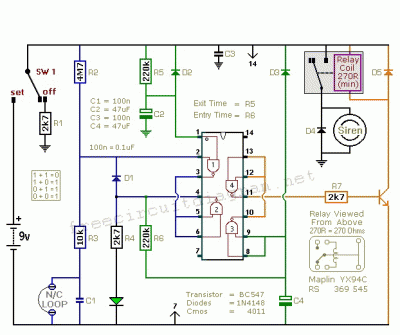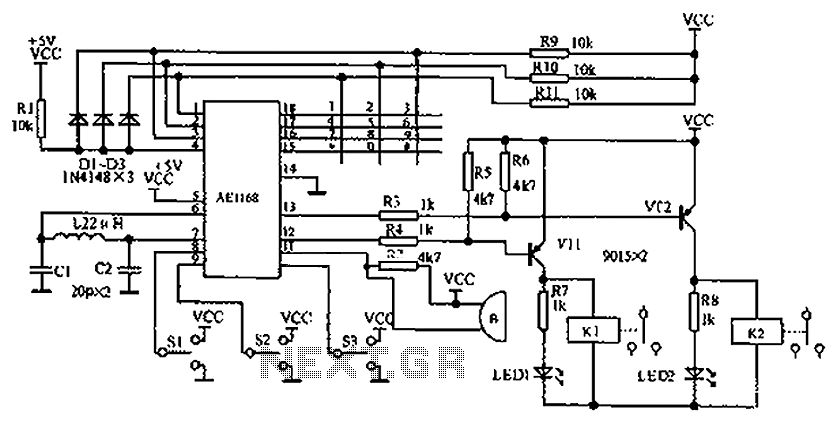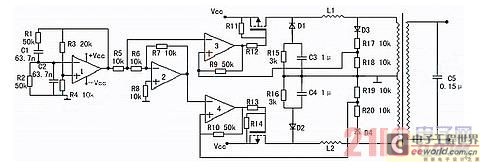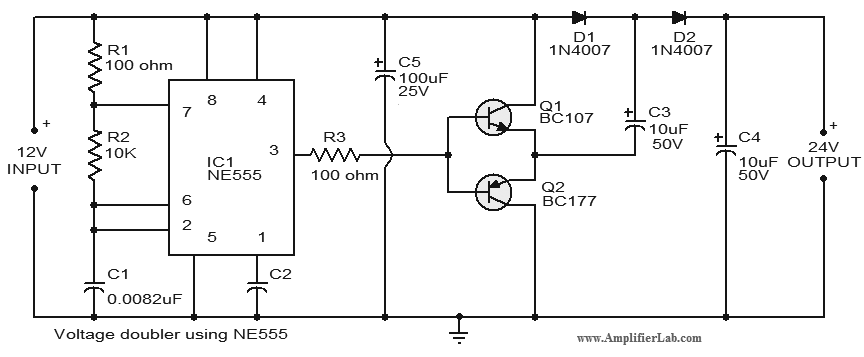
Two-Zone Burglar Alarm circuit
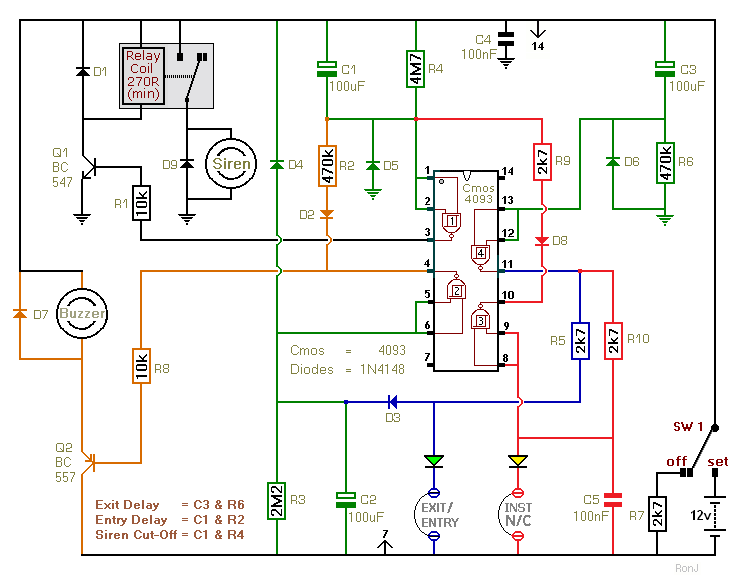
This two-zone alarm features automatic exit, entry, and siren cut-off timers. It was designed for the Beginner's Guide to CMOS Timers, providing a particularly detailed circuit description. An optional One-Time-Only module is available, which will deactivate the siren after the first ten minutes and prevent the alarm from being triggered again.
The two-zone alarm system is designed to enhance security by providing time-controlled functionalities for both entry and exit scenarios. The automatic exit timer allows users to leave the premises without triggering the alarm, while the entry timer provides a grace period for users to disarm the system upon re-entry. This functionality is crucial in residential and commercial settings, where false alarms can lead to unnecessary responses from security personnel or law enforcement.
The core of the system utilizes CMOS timer ICs, which are known for their low power consumption and high reliability. The circuit typically includes two primary timer configurations: one for the exit delay and another for the entry delay. Each timer can be adjusted to suit specific user preferences, allowing flexibility in the alarm's operation.
The optional One-Time-Only module adds an additional layer of security by ensuring that after the initial activation of the alarm, the siren will automatically deactivate after ten minutes. This feature is particularly useful in scenarios where a false alarm may occur, as it prevents the siren from sounding continuously and reduces the likelihood of disturbing neighbors or attracting unnecessary attention. Furthermore, this module ensures that the alarm cannot be reactivated within a short period, thus mitigating the risk of repeated false alarms.
Overall, the two-zone alarm system is a sophisticated solution that combines ease of use with advanced timing features, making it suitable for a variety of applications. The detailed circuit description provided in the Beginner's Guide to CMOS Timers serves as an invaluable resource for those looking to understand or modify the system for their specific needs.This two-zone alarm has automatic exit, entry and siren cut-off timers. It was developed for the Beginner`s Guide To Cmos Timers. So it has a particularly detailed circuit description. There`s an optional One-Time-Only module. It will force the siren to switch off after the first ten minutes - and prevent the alarm from activating a second time.. 🔗 External reference
The two-zone alarm system is designed to enhance security by providing time-controlled functionalities for both entry and exit scenarios. The automatic exit timer allows users to leave the premises without triggering the alarm, while the entry timer provides a grace period for users to disarm the system upon re-entry. This functionality is crucial in residential and commercial settings, where false alarms can lead to unnecessary responses from security personnel or law enforcement.
The core of the system utilizes CMOS timer ICs, which are known for their low power consumption and high reliability. The circuit typically includes two primary timer configurations: one for the exit delay and another for the entry delay. Each timer can be adjusted to suit specific user preferences, allowing flexibility in the alarm's operation.
The optional One-Time-Only module adds an additional layer of security by ensuring that after the initial activation of the alarm, the siren will automatically deactivate after ten minutes. This feature is particularly useful in scenarios where a false alarm may occur, as it prevents the siren from sounding continuously and reduces the likelihood of disturbing neighbors or attracting unnecessary attention. Furthermore, this module ensures that the alarm cannot be reactivated within a short period, thus mitigating the risk of repeated false alarms.
Overall, the two-zone alarm system is a sophisticated solution that combines ease of use with advanced timing features, making it suitable for a variety of applications. The detailed circuit description provided in the Beginner's Guide to CMOS Timers serves as an invaluable resource for those looking to understand or modify the system for their specific needs.This two-zone alarm has automatic exit, entry and siren cut-off timers. It was developed for the Beginner`s Guide To Cmos Timers. So it has a particularly detailed circuit description. There`s an optional One-Time-Only module. It will force the siren to switch off after the first ten minutes - and prevent the alarm from activating a second time.. 🔗 External reference
